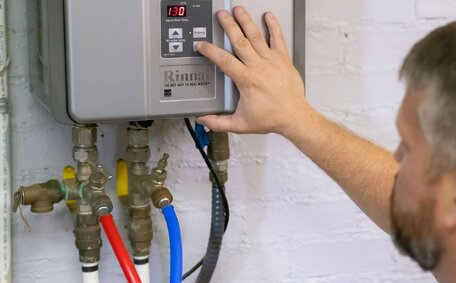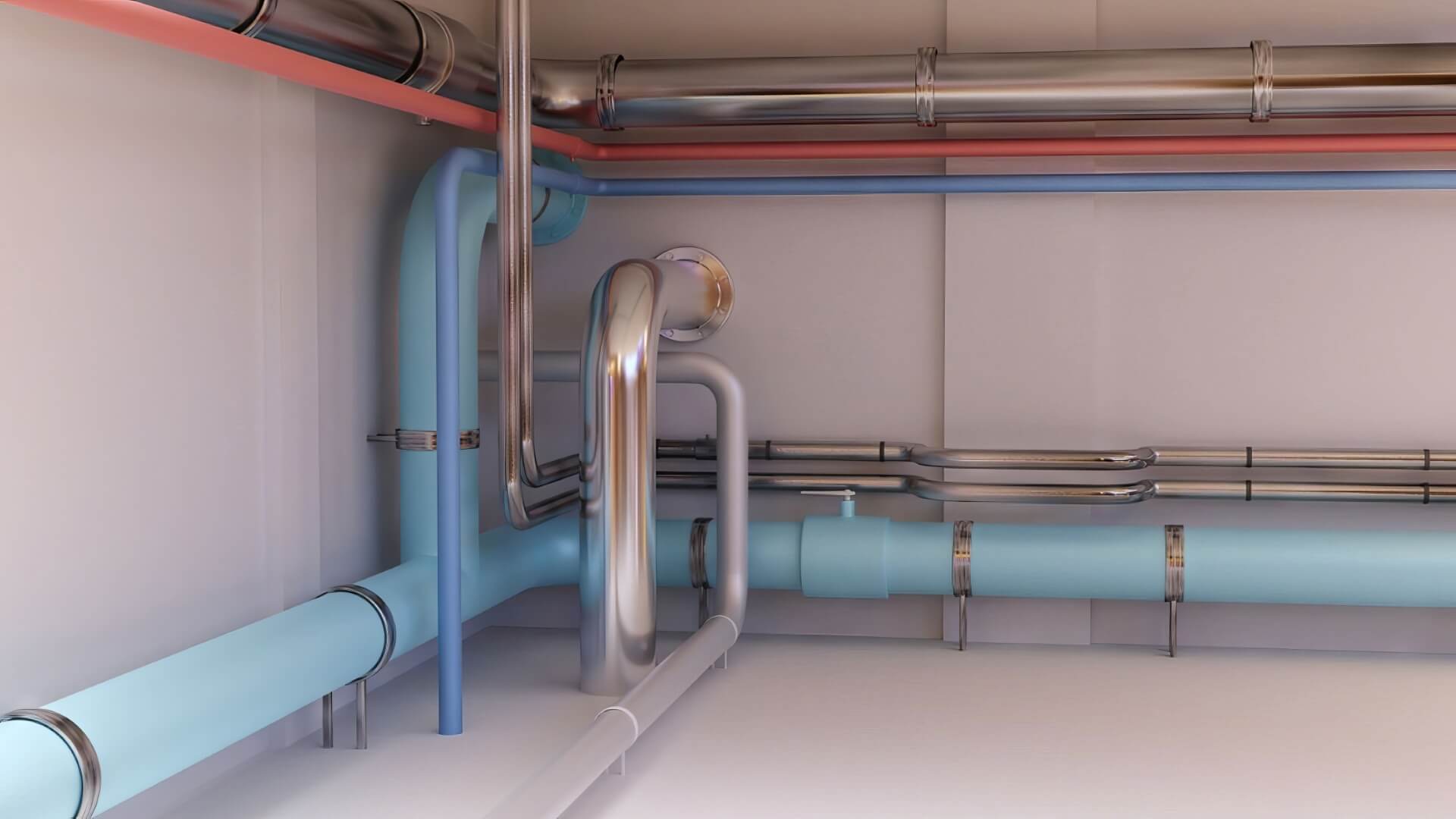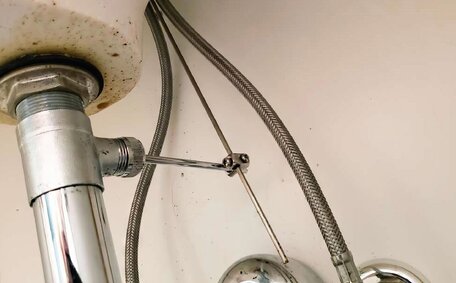Introduction to Pipe Relining
Pipe lining is an innovative and efficient solution for addressing any plumbing issues like blocked drains, leaks, and root intrusion without the need for full pipe replacement. It works by inserting an epoxy resin lining into your drainage system, coating the interior walls of your home’s plumbing and creating a new 'pipe within a pipe’.
Choosing between pipe relining and traditional methods becomes easier when considering the distinct advantages of partial versus full relining. Partial relining targets localized issues in specific sections of piping without requiring a complete system overhaul, whereas full relining involves coating the entire interior piping system. The optimal choice hinges on various factors, including:
- The extent and location of damage
- Accessibility of pipes
- Cost considerations
- The age and condition of your current piping
This guide explores the advantages and disadvantages of pipe relining, demonstrating the appropriate scenarios for both partial and full techniques. You’ll understand why relining is often favored over traditional repairs for addressing unique plumbing challenges.
Understanding the Pipe Relining Process
The pipe relining process is an effective alternative for repairing pipe damage, circumventing traditional replacement methods. Utilizing modern CCTV technology, we carefully inspect the interior condition of your pipes, identifying any defects such as cracks, leaks, blockages, or tree root intrusions.
The process begins with a detailed analysis to ascertain the specifics of the pipe relining required to address the identified issues.
We clean the drain pipe with hydro-jetting, blasting with high-pressure water jets to ensure thorough cleansing. This removes debris and prepares the surface for relining.
The relining itself involves the resin solution, a proprietary epoxy mixture introduced into pipe systems to ensure your pipe relining is effective and durable. The resin is inserted into the pipes and blown or pulled through, adhering and curing along the inside surface to form a smooth barrier. This procedure can effectively create a 'pipe within a pipe,' utilising the existing pipes as a framework, thereby revitalising the used piping structure.
We also use special robotic cutters, a technique in pipe relining far less disruptive than traditional methods, to avoid digging up your yard, removing protruding taps and allowing for a continuous lining. Unlike the traditional route of excavating and replacing your plumbing, relining offers significant advantages, with less disruption and invasiveness.
Sewer pipe relining fortifies your system to closely match the durability of new pipes, potentially lasting decades. The process can improve flow rates and water pressure, resulting in a more efficient system after relining. This method efficiently addresses issues within blocked or damaged sections of pipe, with minimal digging and a clean, tidy finish.
What is Partial Pipe Relining?
Partial pipe relining is a targeted solution that addresses the patch up section of damaged piping without impeding other pipe areas. It is suitable for relining your specific areas of pipework that are compromised and need focussed attention.
Partial relining does not require an overhaul of the entire system. We insert an epoxy resin lining exclusively into the affected sections to seal leaks, repair cracks, and rejuvenate the damaged areas. This technique creates a new 'pipe within a pipe’ in the problematic zones, effectively restoring the integrity of the compromised sections.
The key benefits pipe relining offers when applied partially include:
- Less expensive than pipe replacement - You only cover the costs to reline the pipe sections requiring repair.
- Less invasive - By utilising small access holes to reach the pipes, there’s no need to dig up your garden extensively, avoiding any significant disruption to your driveway.
- Prevents further damage to your plumbing - Seals off problem areas to prevent cracks and leaks from worsening.
- Saves more time - The ability to get the job done promptly results in minimal disruption to your property, ensuring a rapid return to normalcy.
Despite a few drawbacks compared to traditional methods, partial relining is excellent for handling localized damage or performing urgent spot repairs. It doesn’t completely renew your piping system, but it can be an economical and convenient method for addressing specific issues promptly as they manifest.
What is Full Pipe Relining?
Pipe relining is a robust repair method suitable for both home and business properties, thoroughly coating the entire system by inserting an epoxy resin into the interior walls. It is a comprehensive solution that renews the inside old, damaged pipes from the inside out.
Full pipe relining concludes with a diligent cleaning of the entire system within your property, followed by deploying air pressure to drive the resin lining through. As it covers the interior, the epoxy solidifies into a sleek, continuous layer, basically forming a new pipe within the current framework.
The key benefits of full relining pipes include:
- Comprehensive renewal - Acts as a new pipe structure where the existing pipe has been prone to deterioration, thus thoroughly refurbishing systems.
- Long-term solution - The relined pipes have a lifespan of 50+ years.
- Enhanced water flow - Smooths the pipe interiors for improved water pressure.
- Minimal digging and demolition - Far less invasive than replacing your pipe system.
- Preventative care - Gets ahead of any future issues before pipes fail or leak.
Full pipe relining, which effectively installs new pipes within the old ones, stands out as the optimal solution for whole-system renewal, sidestepping the mess and costs associated with traditional pipe replacement. It’s an affordable, long-lasting preventative measure against the most common plumbing problems.
Comparing Costs of Partial vs Full Relining
When weighing up relining vs pipe replacement, cost is often the deciding factor. Here is a detailed comparison:
Partial Pipe Relining
Partial relining efficiently mends broken sections, focusing exclusively on isolated areas without replacing unaffected parts. This offers a more economical option when only damaged sections require replacement, bypassing the need for an entire system reline.
- Cost can used as a guide: $80 - $350 per linear metre
- Compared pipe relining solutions can be used for minor leaks or damage affecting less than 30% of the piping system
Full Pipe Relining
Full relining coats the entire piping system for whole-of-system renewal. While being more comprehensive, it is often more cost-effective in terms of long-term value.
- Cost: $250 - $500 per linear metre
- Suitable when more than 30% of the piping system needs repair or renewal
Though partial relining may be less expensive initially, full system relining can provide superior long-term value when conditions such as the following apply:
- Your pipes are very old and prone to future issues
- You are proactive in addressing potential future leaks before they occur
- You have pipes that are difficult to access if further repairs are needed
We are eager to assist in determining whether partial or full pipe relining is suitable for your needs, providing a detailed quote specific to your situation. When more than 30% of your piping is compromised, full relining typically presents better long-term value by preemptively addressing future problems.
Assessing Longevity of Partial vs Full Solutions
When comes to considering longevity between partial and full pipe relining, full system relining generally offers superior durability and performance over the long term.
In partial relining, only isolated sections are renewed, potentially stabilizing older pipe materials elsewhere in your system. Over time, these unrenewed sections may deteriorate due to wear and tear, possibly weakening in 5-10 years, leading to new problems. Nonetheless, partial relining addresses immediate concerns effectively for the short to medium term.
Conversely, full pipe relining entirely revamps your existing interior piping system with a seamless epoxy layer, preventing any further issues. The ability to deliver a solution that is expected to last upwards of 50 years before necessitating replacement underscores the substantial advantage of full pipe relining.
Additional factors impacting longevity include:
- Pipe material - PVC pipe and other plastic options tend to outlast their metal counterparts.
- Workmanship quality - Ensuring a high standard of professional installation is vital.
- Environmental conditions - Conditions such as corrosive elements into soil can reduce pipe lifespan.
In summary, partial lining offers short-medium term remedy while full system relining delivers superior longevity. For homeowners planning 10+ years ahead, full relining more convincingly provides better value despite higher initial costs.
Evaluating Invasiveness and Disruption
When evaluating the invasiveness and disruption caused by partial versus full pipe relining, it’s clear that relining in general is far less invasive than traditional pipe replacement methods.
Does pipe relining in your case necessitate heavy excavation? Certainly not, as partial relining results in little to no excavation, with access needed only to the isolated areas requiring repair. Small access holes are cut into the pipework and resin liners are inserted. This targeted approach causes very little disturbance to properties.
In comparison, full pipe relining accesses the entire system for complete renewal. When it comes to a more involved job, this may necessitate additional access points and precision cutting. However, this pipe replacement process remains far less invasive than typical excavation methods that require digging extensive trenches.
A benefit of both partial and full sewer line relining is the epoxy barrier’s ability to prevent future root infiltration, ensuring that relined pipes remain a long-term dependable component of trenchless solutions.
In general, relining is considerably less destructive than traditional pipe replacement. Additionally, partial relining causes minimal disruption, making it an ideal technique for quick and localized spot repairs.
When to Choose Partial Relining
Partial pipe relining is the method of choice over full system relining or replacement in various situations:
- Minor, localised damage - When issues like blocked damaged pipes affect less than 30% of the system and are contained to one area, partial relining can efficiently repair them.
- Swift repairs needed - Partial relining, akin to a patch repair, rapidly replaces damaged areas, addressing specific leaks, cracks, or blockages with minimal disruption.
- Access challenges - For pipes in awkward, hard to reach spots, partial relining avoids extensive demolition work to access them.
- Budget constraints - The lower cost of partial relining is suitable if you need an affordable solution for minor issues.
- Short-term occupants - For rental properties or if you plan to sell soon, partial relining can provide a quick fix.
Overall, you should choose pipe relining partially for an ideal balance of affordability, efficiency, and minimal invasion for prompt, localised repairs when a full system renewal isn’t yet necessary.
When to Choose Full Relining
Full pipe relining is best suited in these key scenarios:
- Extensive damage - When over 30% of the piping system requires repairs from cracks, leaks, blockages, corrosion, root intrusion etc.
- Complete system renewal - For ageing systems with issues, full relining restores pipes your property depends on.
- Maximising longevity - A 50+ year lifespan makes full relining worthwhile for those seeking a long-lasting, preventative solution.
- Accessibility challenges - Full relining avoids extensive demolition work to access awkward, hard to reach pipes for future repairs.
- Sellers maximising property value - Renewing old pipes before selling adds value by getting ahead of problems the buyer would otherwise face.
While full pipe relining has a higher initial cost, it can result in significant savings in the long run. Homeowners who plan for more than 5-10 years will find that a complete system renewal mitigates the risk of near-future pipe failures.
Questions to Ask Your Plumber
Key Questions for Your Plumber:
- What percentage of my pipes are in need of pipe repair? This evaluation clarifies whether you need partial or full relining for your property’s plumbing system.
- How do you assess the condition of pipes? Methods may include CCTV camera inspection, after which any issues are expected to come out, pressure testing, smoke testing etc.
- What warranty do you provide on pipe relining work? Many provide at least 50 years.
- What type of epoxy resins will you use? Ask about safety certifications.
- How long will the project take to complete, especially considering if the pipe been previously repaired or relined?
- How much disruption will the pipe repairs cause to my property?
- Can you provide references from past relining jobs?
- Do you have all necessary plumbing licences, accreditations and insurance?
- What payment options do you offer? Get a detailed quote upfront.
- What factors did you consider when making your recommendation of partial vs full relining?
Asking the right questions will help you engage in a well-informed discussion about the best pipe relining service for your situation. As seasoned experts, the team at Glenwood Plumbing is ready to offer excellent pipe relining services and answer all your queries.
Ready to discuss your pipe relining needs? Please get in touch with us or give us a call at 1300 349 338 to initiate the conversation.






